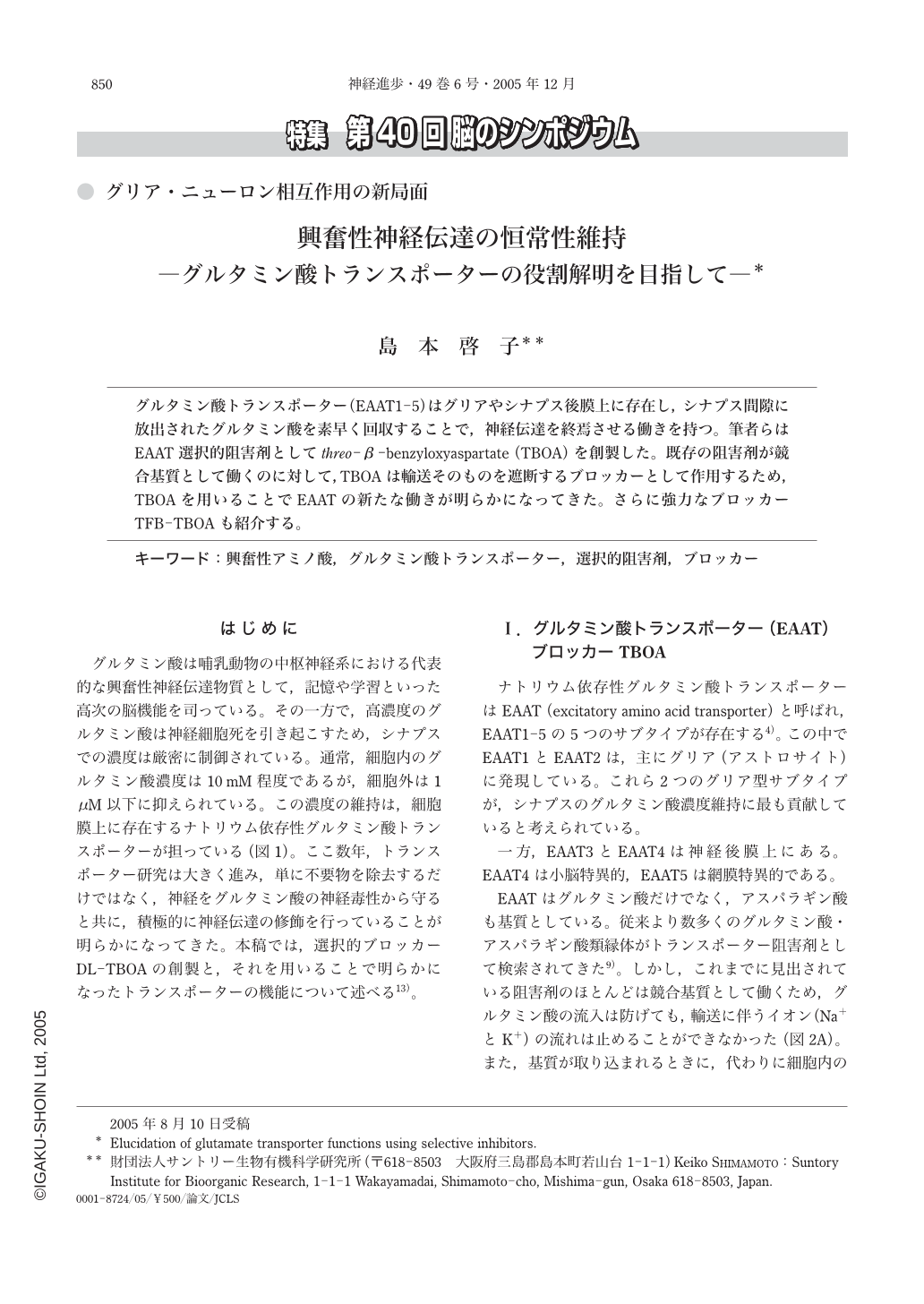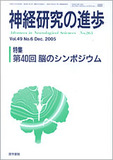Japanese
English
- 有料閲覧
- Abstract 文献概要
- 1ページ目 Look Inside
グルタミン酸トランスポーター(EAAT1-5)はグリアやシナプス後膜上に存在し,シナプス間隙に放出されたグルタミン酸を素早く回収することで,神経伝達を終焉させる働きを持つ。筆者らはEAAT選択的阻害剤としてthreo-β-benzyloxyaspartate(TBOA)を創製した。既存の阻害剤が競合基質として働くのに対して,TBOAは輸送そのものを遮断するブロッカーとして作用するため,TBOAを用いることでEAATの新たな働きが明らかになってきた。さらに強力なブロッカーTFB-TBOAも紹介する。
L-Glutamate is the major excitatory neurotransmitter in the mammalian central nervous system(CNS). To terminate glutamate receptor activation and to protect neurons from excitotoxicity, extracellular glutamate concentrations are strictly controlled by sodium dependent glutamate transporters(excitatory amino acid transporters 1-5:EAATs1-5)located in nerve endings and surrounding glia cells. Selective and potent inhibitors have served as important experimental tools to identify the physiological roles of transporters in the regulation of synaptic transmission or in the pathogenesis of neurological diseases. A pharmacologically useful probe, threo-β-benzyloxyaspartate(DL-TBOA)which functions as a non-transportable blocker for all subtypes of EAATs, have emerged from modification of a known inhibitor threo-β-hydroxyaspartate(THA). Non-transportable blockers are indispensable because, unlike substrates, they do not cause heteroexchange. By comparing the effects of substrates and non-transportable blockers, physiological roles of EAATs have been revealed. EAATs not only remove transmitter from synaptic clefts but also actively modulate neurotransmission. Moreover, higher affinity ligands have been developed as novel pharmacological tools. TBOA analogs possessing a bulky substituent on their benzene ring significantly inhibited labeled glutamate uptake, the most potent of compound being(2S, 3S)-3-{3-[4-(trifluoromethyl)benzoyl-amino]benzyloxy}aspartate(TFB-TBOA). TFB-TBOA is genuinely non-transportable at effective dose and showed no effects on glutamate receptors. TFB-TBOA would be a suitable lead compound for designing functionalized ligands from the perspective of its markedly high affinity for EAAT proteins.

Copyright © 2005, Igaku-Shoin Ltd. All rights reserved.


